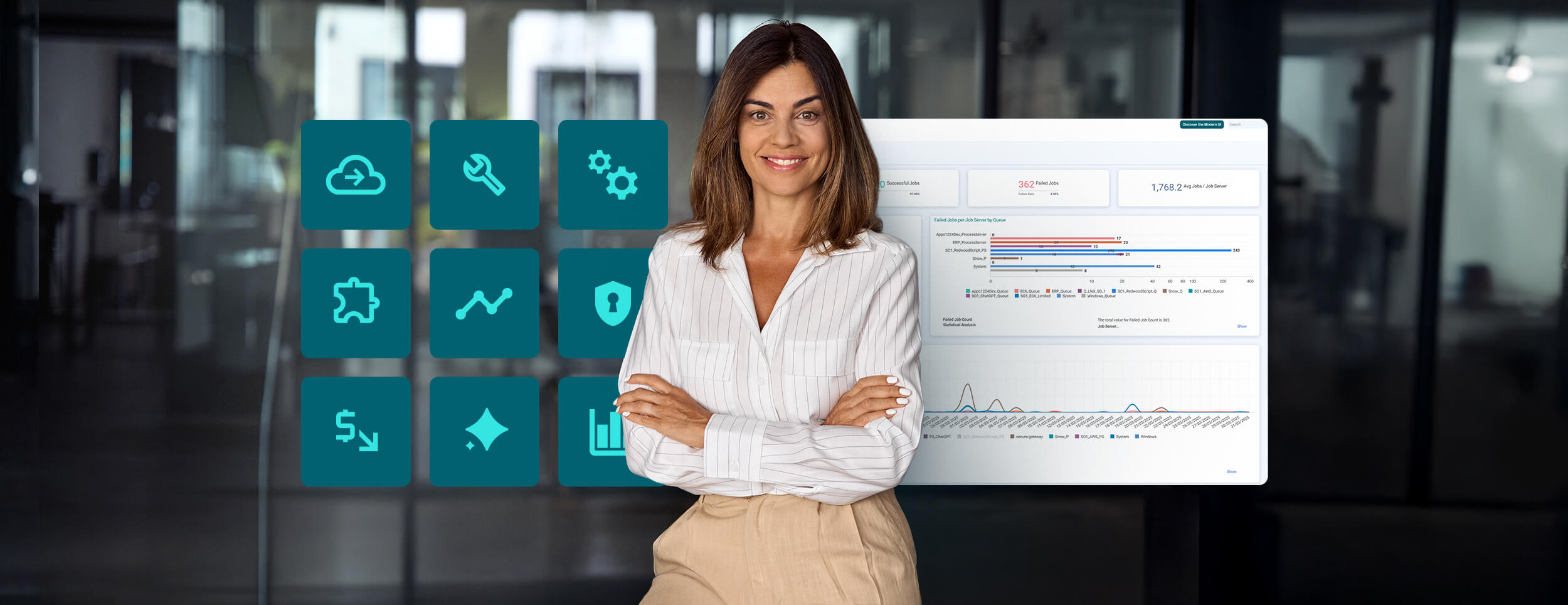9 signs it’s time to embrace SaaS workload automation

Workload automation (WLA) has always been a backbone technology. It runs behind the scenes, connecting ERP, data pipelines, DevOps workflows and business processes, keeping jobs on track and business outcomes on schedule. But many organizations are still running legacy schedulers or WLA tools that have served them well but weren’t built with today’s scale, hybrid IT environments or cloud workloads in mind.
If your IT automation is running well but you’re finding it harder to scale or innovate, it may be the right moment to consider a jump in WLA technology. And modernization doesn’t have to mean all cloud, all at once; many teams keep key processes on-premises while adopting cloud-based orchestration where it adds value.
Here are nine signs that your organization is ready for a change and how doing so will prepare you for scalability and long-term resilience.
✅ Your team is ready to move beyond daily upkeep
On-premises WLA solutions can fall multiple versions behind because upgrades compete with other IT priorities. Adding hardware to expand capacity feels clunky, and even routine maintenance can put critical workflows at risk. When your IT team is spending more energy on patching and firefighting than planning new initiatives, it’s often a signal you’ve outgrown the old model. Upgrading to a SaaS-based platform is less about replacing what you have and more about celebrating that your automation maturity has reached a point where you’re ready for the next level.
✅ Manual fixes are crowding out higher-value work
If your operators are babysitting workflows or writing scripts just to keep processes running, you’re not realizing the full ROI of automation. Time is money, and when you spend hours on workarounds instead of optimizing processes, your total cost of ownership (TCO) rises and strategic value shrinks.
Modern WLA software reduces that manual intervention with event-based triggers, self-service options and automated recovery. Freeing your people from constant fixes means more time spent improving processes and less time chasing failures.
✅ Automation needs to follow workloads into the cloud
Most enterprises are already moving workloads to the cloud, whether it’s data analytics, ERP modules or customer-facing apps. If your WLA doesn’t connect to cloud platforms natively, you’re forced into brittle workarounds that waste time and limit scalability.
Modernization means orchestrating flawlessly across on-prem, hybrid and multi-cloud environments — AWS, Azure, Google Cloud and SaaS applications — with equal reliability. Modern WLA adapts dynamically to wherever the workload runs.
✅ Visibility gaps are slowing decisions
When leaders don’t have a real-time view of workflows, they’re forced to make decisions based on lagging reports or gut instinct. Outdated WLA tools often lack centralized dashboards or predictive analytics. That leaves IT blind to bottlenecks, failed jobs or SLA risks until it’s too late.
Modern platforms deliver observability with centralized dashboards, SLA projections and proactive alerts so you can fix issues before they disrupt the business.
✅ Scaling feels harder than it should
Every business faces periods where job volumes soar: end-of-month closings, holiday traffic, product launches. Traditional WLA models can hit limits under pressure, leading to delays and downtime. Some organizations work around this by adding servers and hardware that they only need a few times a year.
A modern SaaS platforms scales with your business, growing and shrinking with demand, so you only pay for the value you get. That means no scrambling or overbuying.
✅ Maintenance is draining resources
Traditional job scheduling tools can come with hidden costs in the form of specialized staff or consultants and downtime during upgrades. None of that creates business value.
In contrast, a SaaS-based automation platform rolls out updates automatically to minimize downtime and ensure you don’t have to rely on niche expertise. You get true financial headroom, even beyond IT operations.
✅ Security expectations have surpassed your tools
When automation runs financials, healthcare data, customer transactions and other key processes that handle sensitive data, security isn’t optional. Many systems still in use struggle to keep pace with modern cybersecurity expectations.
Today’s automation platforms include role-based access control (RBAC), encryption, continuous patching and audit-ready trails by default. So instead of hoping your system is secure, you can prove it.
✅ AI isn’t part of the equation
If your platform is stuck in reactive mode, you’re missing opportunities to get ahead of issues and continuously improve. Automation isn’t static anymore — it’s intelligent. AI isn’t hype in this space. It’s becoming the standard for enterprises that want reliable, efficient and proactive automation.
The most advanced WLA platforms now layer in AI and machine learning. These capabilities don’t just predict job failures but also recommend optimizations and analyze patterns across thousands of runs. It’s the difference between automation that simply works and automation that amplifies ROI by proactively driving efficiency.
✅ Users want more control without more risk
When automation tools are too complex, IT becomes the bottleneck. Business users resort to shadow IT, running critical business processes outside governance because the official system is too hard to use.
Modern WLA turns this on its head with intuitive interfaces, drag-and-drop workflow builders and delegated self-service. When users are empowered, automation becomes a force multiplier instead of a source of friction.
Why readiness matters now — no matter your use case
Every organization is under pressure to do more with less. Outdated workload automation slows you down, increases risk and adds hidden costs. Modernization isn’t about chasing a trend; it’s about putting your business in a position to scale, innovate and compete.
A modern SaaS WLA solution gives you:
- Scalability without infrastructure sprawl
- Deep integrations not only with SAP and other enterprise systems, but also for hybrid and multi-cloud workloads
- Observability for centralized visibility and predictive monitoring
- AI-driven optimization and self-service
- Built-in security and control
- Lower cost of ownership and fewer upgrade headaches
If these signs sound familiar, it may be because your business success has outgrown traditional approaches. That’s a good thing — it means you’re ready to modernize. Acting now lets you turn that momentum into a more scalable, flexible and resilient automation strategy, just as many leading enterprises are already doing.
What happens when you don’t modernize in time? Find out what the aviation industry learned the hard way.
Partner with the leader in WLA
Redwood Software has been helping enterprises modernize automation for decades, across both on-premises and cloud environments. Redwood was also named a Leader two years in a row in the Gartner® Magic Quadrant™ for Service Orchestration and Automation Platforms (SOAPs).
With RunMyJobs by Redwood, we offer the only SaaS-native WLA platform purpose-built for hybrid IT, designed to support SAP and business-critical processes at scale. Because we’ve led in both on-prem and SaaS, we’re uniquely positioned to guide your transition and help you modernize at your own pace.
Talk with a Redwood expert to see how a modern workload automation solution can reduce costs, boost operational efficiency and support your cloud journey.
About The Author

Taruna Gandhi
Taruna Gandhi is Vice President of Product Marketing at Redwood Software, where she leads the go-to-market strategy of its category-defining workload automation products. Taruna is passionate about demystifying complex technology to solve critical business challenges for customers. Her career has spanned product management and marketing leadership roles at some of the most influential companies in tech, including HPE, Pure Storage, VMware, Red Hat and Sun Microsystems.
Taruna holds an MS in Computer Engineering and an MBA from the Haas School of Business at UC Berkeley.